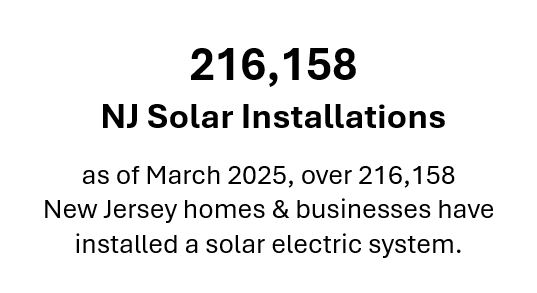Transmission
Transmission Overview
As with most clean energy generation, connecting projects into the regional energy system is critical. For offshore wind generation projects, interconnection involves the transport of electricity generated offshore to onshore landings, known as points of interconnection (POI). From these points, the electricity is injected into the grid. In New Jersey, the electric grid is operated by a multi-state regional transmission organization (RTO), PJM Interconnection, LLC (PJM).
There are two main ways that offshore wind energy is interconnected to the grid – either through independent or radial export cables or through a coordinated transmission system that enables multiple projects to share transmission infrastructure.
Radial Transmission
Radial export cables, where the cable installation is bundled with offshore wind generation installation is the default approach in the absence of coordinated transmission. This approach has been commonly used in European offshore wind and has been proposed for most U.S. offshore wind projects to date. Radial export cables utilize one or more high voltage alternating current (HVAC) or high voltage direct current (HVDC) cables to transmit power from individual projects to one or more POIs. The cables need to be built in line with the project schedule. New Jersey required radial export cables to be used for the first and second offshore wind solicitations.
Coordinated Transmission
On November 18, 2020, the NJBPU positioned New Jersey to be the first state to align its offshore wind transmission goals with its regional grid operator’s planning process. In furtherance of these objectives, set out by Governor Phil Murphy’s goal at the time of 7,500 megawatts of offshore wind energy by 2035, and by the Legislature, the Board formally requested the inclusion of this state public policy into the transmission planning process of PJM through a competitive solicitation process in what is known as the State Agreement Approach (SAA). By making this formal request, the NJBPU used the SAA to explore options for optimal long-term offshore wind transmission solutions that otherwise may not have been available at this stage of development. In response to the SAA solicitation (SAA 1.0), transmission developers submitted 80 unique, competitive, ready-to-build designs seeking to integrate New Jersey’s offshore wind resources into the PJM system.
SAA.1.0
Ultimately, the Board awarded a series of projects through SAA 1.0 to construct the onshore transmission facilities necessary to successfully deliver the electricity generated by multiple offshore wind projects to the electric transmission system. A cornerstone of the awarded projects under SAA 1.0 is the Larrabee Collector Station (LCS) which provides a single POI with the grid for select qualified offshore wind projects. All awarded projects use existing technology commonly used in electricity transmission.
Prebuild Infrastructure
As part of the SAA 1.0 project awards, the Board described the Prebuild Infrastructure (PBI), which is the infrastructure between the landfall point at Sea Girt National Guard Training Center and the Larrabee Collector Station POI. The PBI will include the installation of the necessary underground infrastructure to house the transmission conduits for future use by multiple qualified offshore wind projects, thereby enabling these projects to access the wholesale transmission system. The underground infrastructure envisioned is common for housing power cables to meet electricity needs in highly populated areas.
The benefits that are envisioned from the PBI include minimizing costs and risks to ratepayers through increased competition, and reduced environmental and community impacts through the consolidation of the transmission facilities into fewer onshore corridors and fewer construction efforts than would otherwise be necessary with radial interconnections.
The PBI solicitation opened on November 17, 2023 and is ongoing. Updates on the PBI solicitation can be found here: New Jersey Offshore Wind Prebuild Infrastructure Solicitation (nj.gov). Answers to frequently asked questions can be found here.
A Public Stakeholder Meeting on the Prebuild Infrastructure Project is being held on October 1, 2024. Information about the meeting can be found here: Public Meeting Notice - FINAL-1.pdf (nj.gov).
The materials that will be presented at the meeting can be found at the below links.
Meeting Materials for the October 1, 2024 Prebuild Infrastructure Public Stakeholder Meeting:
• Prebuild Infrastructure Stakeholder Meeting Handout
• Prebuild Infrastructure Informational Posters
• Prebuild Infrastructure Stakeholder Meeting Slides
• Prebuild Infrastructure Special Presentation on Magnetic Fields from DC Cables Slides








.jpg)
